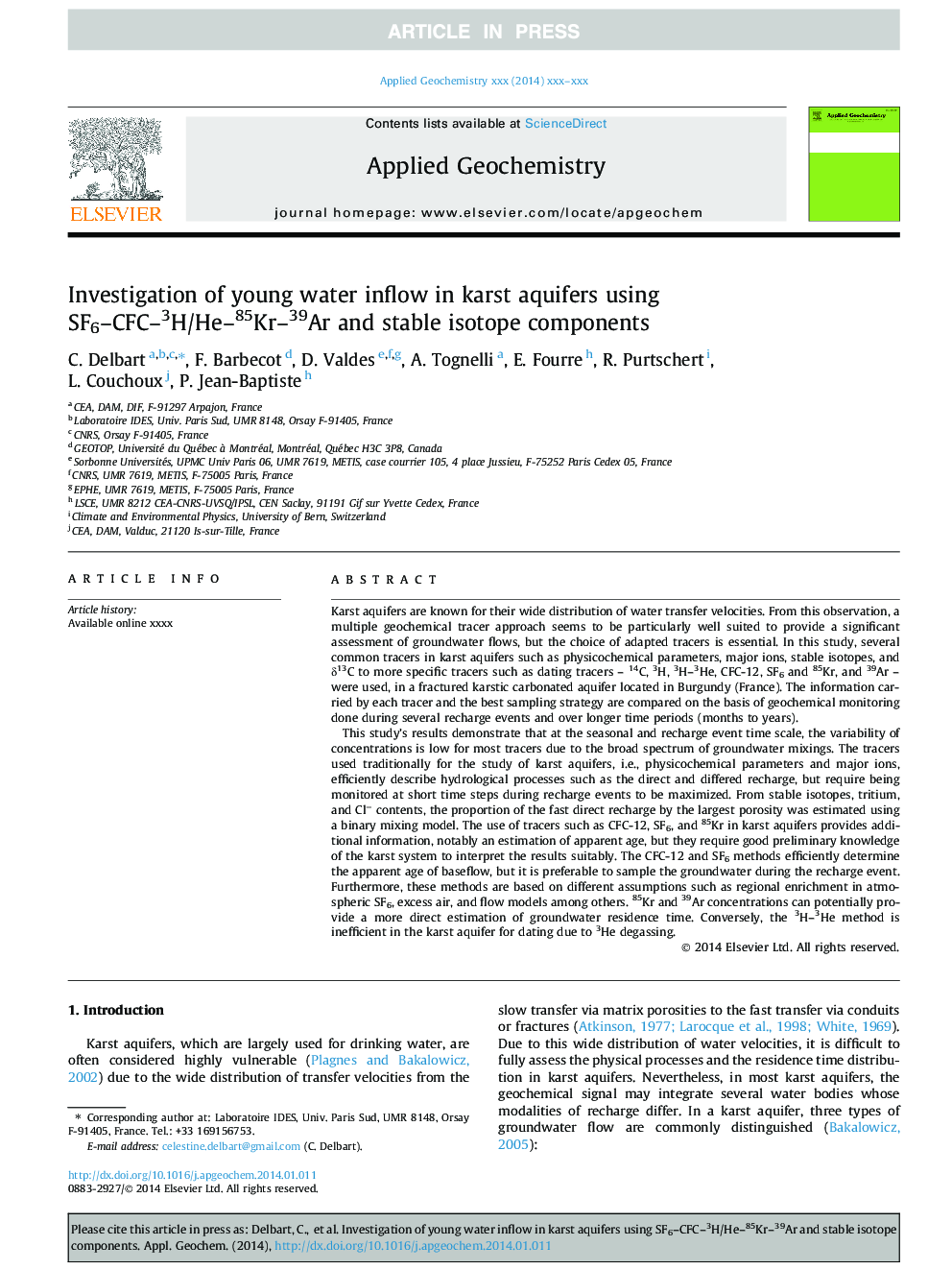| Article ID | Journal | Published Year | Pages | File Type |
|---|---|---|---|---|
| 6335138 | Applied Geochemistry | 2014 | 13 Pages |
Abstract
This study's results demonstrate that at the seasonal and recharge event time scale, the variability of concentrations is low for most tracers due to the broad spectrum of groundwater mixings. The tracers used traditionally for the study of karst aquifers, i.e., physicochemical parameters and major ions, efficiently describe hydrological processes such as the direct and differed recharge, but require being monitored at short time steps during recharge events to be maximized. From stable isotopes, tritium, and Clâ contents, the proportion of the fast direct recharge by the largest porosity was estimated using a binary mixing model. The use of tracers such as CFC-12, SF6, and 85Kr in karst aquifers provides additional information, notably an estimation of apparent age, but they require good preliminary knowledge of the karst system to interpret the results suitably. The CFC-12 and SF6 methods efficiently determine the apparent age of baseflow, but it is preferable to sample the groundwater during the recharge event. Furthermore, these methods are based on different assumptions such as regional enrichment in atmospheric SF6, excess air, and flow models among others. 85Kr and 39Ar concentrations can potentially provide a more direct estimation of groundwater residence time. Conversely, the 3H-3He method is inefficient in the karst aquifer for dating due to 3He degassing.
Related Topics
Physical Sciences and Engineering
Earth and Planetary Sciences
Geochemistry and Petrology
Authors
C. Delbart, F. Barbecot, D. Valdes, A. Tognelli, E. Fourre, R. Purtschert, L. Couchoux, P. Jean-Baptiste,
